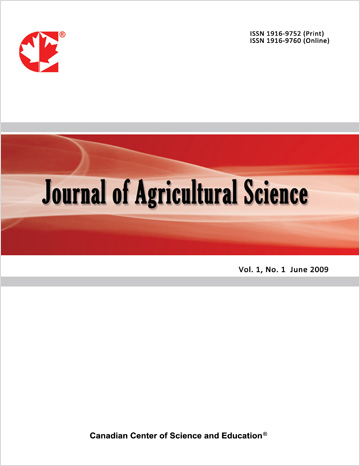Determinants of Post-Harvest Losses in Primary Production: Evidence From Vietnamese Lychee Farming
- Linh T. Pham
- Hisako Nomura
- Mitsuyasu Yabe
- Yoshifumi Takahashi
Abstract
Despite post-harvest losses in primary production severely threatening food security and farmer livelihoods, information about loss quantification and characteristics remains limited, by focusing exclusively on physical damage while ignoring quality deterioration and economic value losses. This study addresses this gap by examining Vietnamese lychee production from harvesting to primary commercialization, expanding loss quantification beyond conventional physical damage to incorporate intuitive losses representing quality deterioration and economic losses from farmers’ weak market power. Fractional regression models are employed to explore factors affecting post-harvest losses and determine marginal effects across different loss types. Data reveal an average total post-harvest loss of 12%, driven by three primary factor groups: household and farming characteristics, post-harvest handling practices, and market conditions. Notably, Good Agricultural Practice (GAP) implementation and agricultural cooperative participation demonstrate the largest effect magnitudes, followed by cold storage usage and other post-harvest handling practices. Whereas prior studies targeting isolated technical interventions, these findings enable systematic solutions for comprehensive post-harvest loss reduction, including expanded GAP adoption to improve product quality, cooperative development to strengthen market positioning, and shelf-life extension technologies that enable farmers to diversify markets and reduce vulnerability to exploitative trading practices.
- Full Text:
 PDF
PDF
- DOI:10.5539/jas.v17n11p40
Journal Metrics
- h-index: 67
- i10-index: 839
- WJCI (2023): 0.884
- WJCI Impact Factor (2023): 0.196
Index
- AGRICOLA
- AGRIS
- BASE (Bielefeld Academic Search Engine)
- Berkeley Library
- CAB Abstracts
- ChronosHub
- CiteSeerx
- CNKI Scholar
- Copyright Clearance Center
- CrossRef
- DESY Publication Database
- DTU Library
- e-Library
- EBSCOhost
- EconPapers
- Elektronische Zeitschriftenbibliothek (EZB)
- EuroPub Database
- Excellence in Research for Australia (ERA)
- Google Scholar
- Harvard Library
- IDEAS
- iDiscover
- Jisc Library Hub Discover
- JournalTOCs
- KindCongress
- LIVIVO (ZB MED)
- LOCKSS
- Max Planck Institutes
- Mendeley
- MIAR
- Mir@bel
- NLM Catalog PubMed
- Norwegian Centre for Research Data (NSD)
- Open J-Gate
- OUCI
- PKP Open Archives Harvester
- Polska Bibliografia Naukowa
- Qualis/CAPES
- RefSeek
- RePEc
- ROAD
- ScienceOpen
- Scilit
- SCiNiTO
- Semantic Scholar
- SHERPA/RoMEO
- Southwest-German Union Catalogue
- Standard Periodical Directory
- Stanford Libraries
- SUDOC
- Swisscovery
- Technische Informationsbibliothek (TIB)
- Trove
- UCR Library
- Ulrich's
- UniCat
- Universe Digital Library
- WorldCat
- WRLC Catalog
- Zeitschriften Daten Bank (ZDB)
Contact
- Anne BrownEditorial Assistant
- jas@ccsenet.org
